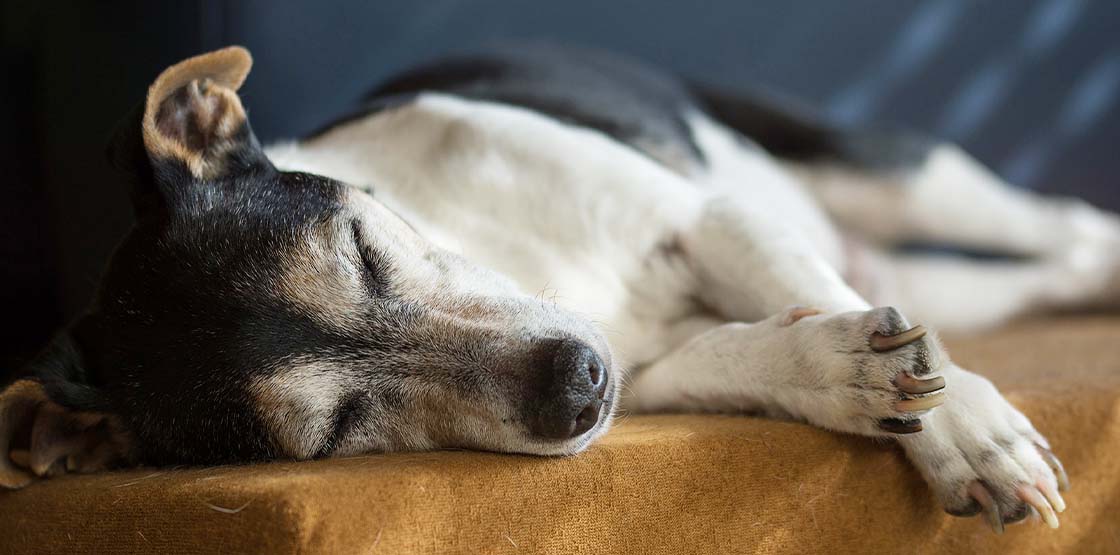How to Plan for Adopting a Blind Dog
When we imagine being unable to see, we probably feel stressed and worried. But for our dogs, sight ranks as the third most important sense, behind both hearing and smell. So, that means a blind dog is likely to adapt and be just as lively and mischievous as a dog who has full vision.
Before adopting a blind dog, consideration is needed as to whether this is the right option for you and your family. Adopting any dog is a big commitment, and for a blind dog, there are some extra responsibilities.
What Supplies Will You Need?
Your blind dog will need all of the usual supplies, such as a collar and leash, but there are a few extras that can really help them to navigate their new home, such as:
- A wind chime to place near the back door. The sound of the gentle chimes can help your dog to find their way back into the house after they are done outside.
- A pet water fountain. Your dog will be able to hear the water flowing, making it easier for them to find water when thirsty.
- Stair gates. These are the perfect way to section off parts of the house, such as stairways, which might not be safe for your dog to venture into.
- Custom hoop harnesses. These are now available to prevent your dog from bumping their head or nose into objects. The hoop extends from the harness creating a safe, protected zone as they wander around the home.
Safety Proofing Your Home
Bringing a new dog into your family is an exciting time. Before they arrive, take some time to consider what adjustments you can make to keep them safe in their new environment. To get you started, we have come up with our top five list of hints and tips for proofing your home:
- Get down on your hands and knees and check out your home. Now you will be able to see all of the potential hazards that are positioned at your dog's height.
- Use bubble wrap or foam pipe insulation to pad sharp corners on coffee tables and furniture legs.
- Decide on the final placement of furniture before your dog comes home. Your visually impaired dog will create a map of their environment to allow them to move around safely.
- Use real and silk plants as feelers. As your dog touches the plant, it becomes an early warning system that there is something harder coming up. It is ideal for placing around trees and porch posts outside, and furniture in the home.
- Place a carpet mat at the top and bottom of steps so that your dog knows when they need to step up and when there are no more steps to navigate.
You May Also Like:
Related Search Topics (Ads):
Training and Playing for Your Blind Dog
A dog who is unable to see will be just as much
in need of training and play as a dog with full vision. Safety always needs to be your primary concern, so off-leash exercises need to be within safe enclosed environments and games should be selected to provide safe opportunities for some fun.
Start teaching your dog words which help them to safely move around, so that might include, “stop”, “step up”, “step down” and “steady”. Using delicious treats is a great way of helping your dog learn what is required. So, for the “stop” behavior, let your dog take a few paces and then simply place a treat right in front of your dog's nose. Say “stop” and then they can get the food. It will not take long before they put on the brakes as soon as they hear the word.
Toys that make noise are going to be the best options, but you can also convert other toys by adding in scent. So, that favorite tennis ball can be stored in a box with a drop of peppermint essence overnight and it suddenly becomes very easy for your limited sight dog to play with
Games which make full use of your dog’s amazing sense of smell are going to good choices. Consider scatter feeding some of their meals, so that is throwing their kibble into the yard for them to find. That peppermint scented tennis ball? Hide it around the house for your dog to find. Start easy, tucking it behind a cushion or sofa, then progress to making it more difficult as they begin to understand the game.
Pros of Adopting a Blind Dog
The first perk of adopting a blind dog is that dogs with vision problems have come from very difficult pasts. The opportunity to turnaround a dog's life will provide an enormous sense of accomplishment.
Also, when you see your blind dog confidently chasing their ball or playing with your other dogs, you will know that they are not so different from other dogs.
Every day they will remind you of how we can adjust, move on and live incredibly full lives despite the challenges we experience.
Cons of Adopting a Blind Dog
Unfortunately, exercise options may be more limited. If you are going somewhere new, your blind dog will always need to be on a leash.
Also, take careful consideration to how tolerant other dogs in the family are. In the early days, the blind dog is likely to knock into and walk over them. Not all dogs will tolerate this well.
Make sure to ensure that you know how or why the dog came to lose their sight so that you will be prepared for the costs of any future treatment.

